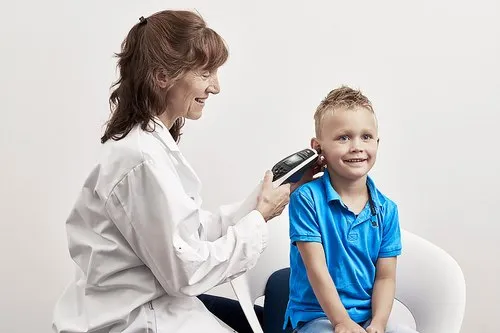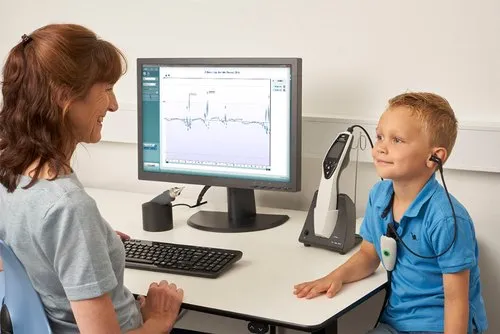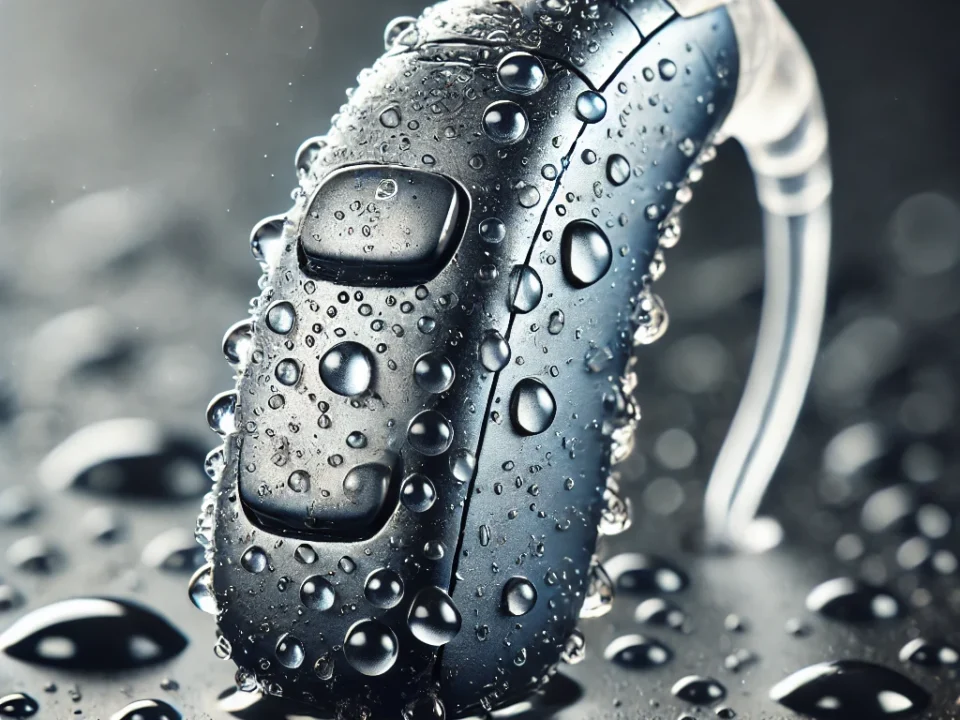
Genetics and Hearing Loss
September 18, 2024
Autoimmune Inner Ear Disease (AIED)
October 2, 2024At The Audiology Place, one of the critical tools we use to assess hearing health is a test called Otoacoustic Emissions (OAEs). This simple, non-invasive test helps evaluate the function of the inner ear, providing essential information, especially for patients who may not be able to undergo conventional hearing tests, such as young children. Let’s explore what OAE tests are, what they assess, and why they are vital for your auditory health.
What Are Otoacoustic Emissions?
Otoacoustic emissions are sounds naturally generated by the inner ear (cochlea) in response to an external sound. These emissions occur when the tiny hair cells inside the cochlea respond to a sound by vibrating, creating a byproduct sound that travels back out through the ear. A sensitive microphone placed in the ear canal can pick up this sound.
There are two types of OAEs:
- Spontaneous Otoacoustic Emissions (SOAE): These emissions occur without any external sound stimulus.
- Evoked Otoacoustic Emissions (EOAE): These emissions occur in response to a sound stimulus, such as a click or a pure tone.
At The Audiology Place, we focus on evoked OAE testing, a crucial tool for screening hearing ability in patients of all ages.
What Do Otoacoustic Emissions Test?
OAE testing assesses the health and functionality of the cochlea’s outer hair cells. These cells play a crucial role in hearing by amplifying sound signals and sending them to the brain. When these hair cells are damaged, hearing loss can occur. By measuring the OAE response, the Audiologist can determine if the outer hair cells function properly. This makes OAE testing particularly useful in detecting:
- Hearing loss in newborns and young children who may not be able to respond to traditional hearing tests.
- Hidden hearing loss that may not yet be visible on a regular audiogram.
- Hearing changes due to noise exposure or ototoxic medications (medications that can damage hearing).
- The functioning of the cochlea in individuals who might have auditory neuropathy spectrum disorder (ANSD), a condition where sound information is not properly transmitted from the inner ear to the brain.
Why Is OAE Testing Important?
- Early Detection of Hearing Loss: OAE testing is a key component in newborn hearing screening programs. It helps detect hearing loss early, allowing children to receive treatment as soon as possible, which is critical for language development.
- Objective Test: Unlike conventional hearing tests, which require the patient to respond to sounds, OAE testing automatically measures the ear’s response. This makes it ideal for patients who may not be able to actively participate in hearing tests, such as infants or individuals with developmental delays.
- Non-Invasive and Quick: The test is non-invasive and takes just a few minutes. It is painless and can be done while the patient is resting or sleeping, making it especially useful for newborns and children.
Testing Children with OAEs
OAE testing is important for young children, as traditional hearing tests often rely on patient cooperation, which can be challenging with infants or toddlers. The test is quick and straightforward, involving the placement of a small probe in the ear that plays a series of sounds. The probe then records the ear’s response. OAEs are also important for children too young to tolerate wearing headphones during their audiology assessment. OAEs can give us ear-specific information, whereas the standard hearing test without headphones will only give us whatever the “better ear” is hearing. A conventional hearing test performed through a speaker with younger children will not tell us what is happening in each ear individually, so OAEs are an essential test to perform on these children.
In Australia, newborns often undergo OAE screening shortly after birth as part of the universal newborn hearing screening program. If a newborn does not pass the initial screening, they may undergo further testing, including an auditory brainstem response (ABR) test, to confirm any potential hearing issues. Early identification of hearing loss through OAE testing allows for timely intervention, whether that involves hearing aids, cochlear implants, or other hearing augmentation methods. This early action is critical for developing speech and language skills, ensuring children reach their full potential.

The Role of OAE in Long-Term Hearing Health
For patients of all ages, OAE testing remains a useful tool to monitor hearing health. It’s often used to:
- Monitor hearing changes over time, especially in individuals exposed to loud environments, such as musicians or workers in noisy industries.
- Detect early signs of damage from ototoxic medications. This proactive approach can help prevent further hearing loss.
- Support tinnitus evaluation. OAE testing can help determine whether tinnitus (ringing in the ears) is linked to cochlear damage.
OAE testing is a crucial part of our toolkit at The Audiology Place. It provides valuable insight into the health of the inner ear, helping us detect hearing loss early and monitor changes in hearing over time. Whether it is for newborn screening, assessing hearing in young children, or monitoring adults exposed to loud noise or ototoxic medications, OAE testing plays an essential role in protecting and maintaining your auditory health.
If you have any concerns about your hearing or would like to schedule an OAE test, contact us at The Audiology Place. We are here to support your hearing journey at every stage.
References
Go NA, Stamper GC, Johnson TA. (2019) Cochlear Mechanisms and Otoacoustic Emission Test Performance. Ear Hear. 40(2):401-417. doi: 10.1097/AUD.0000000000000625.
Kemp, D. (2002), Otoacoustic emissions, their origin in cochlear function, and use, British Medical Bulletin, Volume 63, Issue 1, Pages 223–241, https://doi.org/10.1093/bmb/63.1.223
Paping DE, van der Schroef M, Helleman HW, Goedegebure A, Baatenburg de Jong RJ, Vroegop JL. (2022) Distortion Product Otoacoustic Emissions in Screening for Early Stages of High-frequency Hearing Loss in Adolescents. Noise Health ;24(112):20-26. doi: 10.4103/nah.nah_38_21.
Sanfins MD, Bertazolli LF, Skarzynski PH, Skarzynska MB, Donadon C, Colella-Santos MF. (2020) Otoacoustic Emissions in Children with Long-Term Middle Ear Disease. Life (Basel);10(11):287. doi: 10.3390/life10110287.




